Numery archiwalne
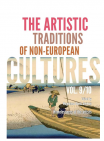
Vol. 9/10: The Homelessness of The Artists, ed. MAGDALENA DURDA-DMITRUK
Contents: MAGDALENA DURDA-DMITRUK, Introduction; YUKO NAKAMA, Miyanaga Aiko and the Flow of Water; AKIKO KASUYA, The Eternal Traveler Tomohiro Higashikage; ANNA KATARZYNA MALESZKO, Darkness and Radiance, or on the Benefits of Suffering in an Artist’s Solitary Wandering; MAGDALENA FURMANIK-KOWALSKA, Living out of a Suitcase. The Symbols of Travel in Far East Asian Art; AGNIESZKA ROŻNOWSKA-JASIEWICZ, Modern-day Nomads; DOROTA SEWERYN-PUCHALSKA, Koji Kamoji. From Homelessness to Settling into Oneself; MAGDALENA DURDA-DMITRUK, Takesade Matsutani: In Search of Artistic Identity; RADOSŁAW PREDYGIER, My Way in Japan
Polish Institute of World Art Studies & Tako Publishing House, Warszawa – Toruń 2021/2022
ISSN 2450-5692 (114 pp)
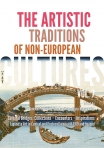
Vol. 7/8 – Cultural Bridges: Collections – Encounters – Inspirations. Japanese Art in Central and Eastern Europe till 1919 and beyond, EVA KAMINSKI, BEATA ROMANOWICZ & ALEKSANDRA GÖRLICH (eds.)
Contents: EWA KAMIŃSKA, BEATA ROMANOWICZ, ALEKSANDRA GÖRLICH, Collection – Encounters – Inspirations. Contemporary research on artistic relations between Europe and Japan; EWA KAMIŃSKA, Learning from Japan and inspiring the future. Feliks “Manggha“ Jasieński and the 100-year anniversary of diplomatic relations between Poland and Japan; COLLECTIONS: KASUYA AKIKO, History of Museum in Japan and the character of its collection; ALICE KRAEMEROVÁ, Japanese arts and crafts for European customers; RALF ČEPLAK MENCIN, The first extensive collection of Chinese and Japanese antiquities in Slovenia; KLARA HRVATIN, Japanese collections in Slovenia: past exhibitions and present developments; KRISTINE MILERE; Japanese art collection of the Latvian National Museum of Art; ANNA KATARZYNA MALESZKO, Significant sources in creating the Warsaw collections of Japanese art; MAŁGORZATA REINHARD CHLANDA, Technical-Industrial Museum and its role as the first state institution in Krakow collecting Japanese art; BEATA ROMANOWICZ, Collecting Japanese art in the National Museum in Krakow before 1919; KRZYSZTOF KALITKO, JOANNA KOKOĆ, The unfinished journey. The Hasamibako from the collection of the National Museum In Poznań; ENCOUNTERS: ESTERA ŻEROMSKA, The turn of the 20th century and the mosaic of the Polish-Japanese associations (religion, dance, theatre, literature, music); ALEKSANDRA GÖRLICH, Image of Japan created by Feliks “Manggha” Jasieński in articles published in the ‘Miesięcznik Literacki i Artystyczny’ and ‘Chimera’ magazines; AGNESE HAIJIMA, Cultural ties between Japan and Latvia: with focus on architecture, interior design, landscape architecture and art collections; INSPIRATONS: ŁUKASZ KOSSOWSKI, Point of view; SVITLANA RYBALKO, Japonisme in Ukrainian art of the late 19th–early 21st centuries; IVANNA PAVELCHUK, Reflections on Japonism in the practice of Ukrainian Colourists of the Art Nouveau period; ZOFIA WEISS, The influence of Japanese woodcuts on erotic images of women in European art at the turn of the 19th and 20th centuries; RAPORTS: YUMI SEGAWA, Digital archives in Japan: digital resources of Japanese arts and crafts and current movements; ANNA KRÓL, Exhibitions of Polish Japanism at the Manggha Museum as intercultural dialogue; MIRJAM DÉNES, A common heritage. Japonism in the Austro-Hungarian monarchy: a project report.
Polish Institute of World Art Studies & Tako Publishing House, Warszawa – Toruń 2019/2020 [2021] ISSN 2450-5692 ISBN 978-83-66758-08-7 (ss. 324)

Vol. 6 – 2018, Art, oral and written intertwined in African cultures, ZUZANNA AUGUSTYNIAK @ HANNA RUBINKOWSKA-ANIOŁ (eds.)
Contents: ZUZANNA AUGUSTYNIAK, HANNA RUBINKOWSKA-ANIOŁ, Foreword to The Art, the Oral and the Written Intertwined; DÁNIEL VICTOR TAKÁCS, Performing Eternally: Visible Signs of Oral Tradition in Ancient Egypt; ANJA KOOTZ, Form follows function. The use of oral, visual and written communication in Ancient Egypt; ROBERT PIĘTEK, HANNA RUBINKOWSKA-ANIOŁ, Constructing Angola’s history through pictures – the case of queen Nzinga; ; ANETA PAWŁOWSKA, Images Instead of Words and Text - South African Street Art; OLGA CLARKE, African Art in European Framework – the Case of Nigeria; ASHENAFI YONAS ABEBE, The value of oral tradition in searching for “self” in Kambaata-Ethiopia: The case of Kambaata names; ZUZANNA AUGUSTYNIAK, Fabula. Yawreoch Commedia by Tekle Hawariat Tekle Mariam and George Orwell's Animal Farm - same topic, different approach.
Polish Institute of World Art Studies & Tako Publishing House, Warszawa – Toruń 2018
ISSN 2450-5692 ISBN 978-83-9556575-2-8 (128 pp.)
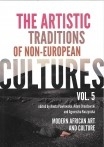
Vol. 5 – Modern African Art and Culture, ANETA PAWŁOWSKA, ADAM DROZDOWSKI and AGNIESZKA KUCZYŃSKA (eds.)
Contents: Introduction; PART ONE THEORY: OLATUNJI ALABI OYESHILE, Re-Theorizing Indigenous African Art and Aesthetics for African Development: The Yoruba Example; FELIX O. OLATUNJI Art as an Integral Form of Development in Africa; ABEDALRAZAK AHMED AL-NASIRI Cultural Modernization in Zanzibar 1890–1939; PART TWO ARCHITECTURE: BLAZEJ CIARKOWSKI, Universal or Indigenous? Modernist Architecture in Africa; JULIA SOWIŃSKA–HEIM, Contemporary architecture of the African Continent and its Role in Building Cultural Identity; HAYDER NADHIM SHAKIR The Architecture in Zanzibar during the Period (1840–1890); PART THREE VISUAL ART: ANETA PAWŁOWSKA Joint Concepts of Primitivism and “Noble Savage” as Significant Inspiration for the Contemporary South African Artists; ALEKSANDRA ŁUKASZEWICZ ALCARAZ, De-construction, Haunting, and Non-normative Representations – Chosen Strategies in Artistic Research on Redefining Postcolonial Identities in the Context of the Republic of South Africa; HANNA RUBINKOWSKA-ANIOŁ, Antika – Ethiopian Airport Art as a Construction of Tradition; MAŁGORZATA SZUPEJKO Wanjiku Character – A Commentator on Social Reality and Political Events. Caricature in Kenya; PART FOUR AFRICAN ART IN WESTERN COLLECTIONS: ZYGMUNT L. OSTROWSKI History of Young Artist Discovered in Africa; ANDRZEJ JAJSZCZYK Review. Fascinating Contemporary African Art. Exhibition: Art/Afrique, le Nouvel Atelier.
Polish Institute of World Art Studies & Tako Publishing House, Warsaw – Toruń 2017
ISSN 2450-5692 (159 pp.)
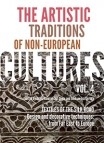
Vol. 4 – Textiles of the Silk Road. Design and decorative techniques: from Far East to Europe, BEATA BIEDROŃSKA-SŁOTA & ALEKSANDRA GÖRLICH (eds.)
Contents: Introduction (Jerzy Malinowski; Aleksandra Görlich); PART ONE: EAST ASIA: MAŁGORZATA MARTINI, Kumihimo: An Ancient Art or a Present–Day One? The Gifts of Mrs Midori Suzuki to the Japanese Art Collection in Kraków; BARBARA SZEWCZYK, “How the Kimono Released Women from Corsets” – Japonism in Fashion at the Turn of the 19th and 20th Centuries; Anna Bielak, The Kimono as a Fashion Phenomenon in Modern Japan and Beyond; Maria Cybulska, TOMASZ DRÓŻDŻ, Traditional Japanese Shibori and Contemporary Textile Design; JOANNA BODZEK, To [Mend] A Reflection on the Lee Edelkoort Anti-Fashion Manifesto, the Kimono Reconstruction Project – My Personal Vision on How Mended Clothes Can Mean “Style” in the Future and How This is Connected with the Boro Textiles of Japan; EWA ORLIŃSKA-MIANOWSKA, Reception of the Orient in the Eighteenth-Century European Silk Industry; PART TWO: CENTRAL ASIA: MARTA ŻUCHOWSKA, Transferring Patterns Along the Silk Road: Vine and Grape Motifs on Chinese Silks in the 1st Millennium AD; PAWEŁ JANIK, The Faces from Noin Ula’s Embroidery – Xiongnu or Kushans?; ASTRID KLEIN, The Language of Kučean Clothing: A Comparative Study of Wall Paintings and Textiles; PART THREE: FROM CENTRAL ASIA TO NEAR EAST AND EUROPE – INFLUENCES: KOSUKE GOTO, The Celestial Lotus: On the Sources of Ornamental Patterns Woven in Silk Samite; MARIA LUDOVICA ROSATI, Textiles Patterns on the Move: Looking at the Iconographical Exchanges Along the Silk Route in the Pre-Modern Period as Cultural Processes; BEATA BIEDROŃSKA-SŁOTA, The Cross-Cultural Role of Textiles Exemplified by Textiles with Arabic Inscriptions and Some Other Motifs; CEMILE TUNA, Silk Trade from Bursa to Krakow on the Silk Road; PART FOUR: TECHNIQUE AND TRADITION THROUGHOUT ASIA: NATALIA SHABALINA, Colour is a Sign of National Traditional Ornamental Art; RACEP KARADAG, Characterisation of Dyes, Metal Threads and Silk Yarns from 16–18th-century Ottoman Silk Brocades.
Polish Institute of World Art Studies & Tako Publishing House, Warsaw–Toruń 2016
ISSN 2450-569 ISBN 978-83-62737-90-1 (180 pp.)

Vol. 3 – Entre el arte y el ritual. Las manifestaciones artísticas en México Pre-colonial y Colonial, y sus supervivencias actuals, KATARZYNA SZOBLIK (ed.)
Contenidos: Introducción; ÉPOCA PRE-COLONIAL: KATARZYNA SZOBLIK, Los instrumentos musicales de los antiguos nahuas; KATARZYNA MIKULSKA, Las “metáforas visuales” en el Códice Borbónico y otros manuscritos religiosos: signos de bolas de zacate y de la noche; JOSÉ CONTEL,Tlalloc, el agua, el cerro y el poder. Estudio del dios de la lluvia desde las fuentes tezcocanas; ZUZANNA JAGODZIŃSKA Y KAJETAN JAGODZIŃSKI, El carácter audiovisual de los murales precolombinos mayas de las pinturas seleccionadas de San Bartolo y Bonampak; ÉPOCA COLONIAL: ÉDGAR GARCÍA VALENCIA, Fernán González de Eslava, teatro y jeroglíficos para una fiesta jesuita; ENRIQUETA M. OLGUÍN, México en madera, hueso y concha, un efecto del Galeón de Manila; Laurence Le Bouhellec, Música de castas en la Nueva Espana de los siglos XVII y XVIII; SUPERVIVENCIAS ACTUALES: ELIZABETH ARAIZA HERNÁNDEZ, Formas de ser mujer indígena en el teatro en México del siglo XVII al XX; MIRTEA ELIZABETH ACUNA CEPEDA, FLORENTINA PRECIADO CORTÉS, Creencias y rituales en torno a la fiesta de la Candelaria: feminidad sublimada y sometida; DAVID TERRAZAS TELLO, La Danza del Diablo: Estéticas-rituales-comunitarias en la Mixteca Oaxaquena; RAFAEL ERNESTO SÁNCHEZ SUÁREZ, Las fiestas oaxaquenas como elemento simbólico del espacio: el caso de las Velas Istmenas.
Instituto Polaco de Estudios de Arte Mundial & Editorial Tako, Varsovia-Toruń 2015
ISBN 978-83-62737-81-9 (282 pp.)
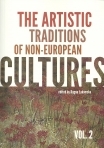
Vol. 2 – The Artistic Traditions of Non-European Cultures, BOGNA ŁAKOMSKA (ed.)
Contents: Introduction; BOGNA ŁAKOMSKA, The origins of collecting in China. Underground bronze treasures as a reflection of ancient collecting; AMELIA MACIOSZEK, Celadons in China, Their Fustat Finds, and Imitations in the Islamic World; JEAN-YVES HEURTEBISE, Comparative Aesthetics: the construction of perspective in Chinese and European paintings; AGNIESZKA STASZCZYK, Three vaisnava pillars from the Gupta period in the collections of the Bharat Kalā Bhavan and the Allahabad Museum; DOROTA KAMIŃSKA, England’s affair with India Bibi in the art of European artists in the second half of the eighteenth century; NATALIA SHABALINA, Modern art of traditional Ural crafts; MARTA SKWIROWSKA, Rincón de los Milagros. Passing through a moment; SU-HSING LIN, Paintings on the Preservation of Life and Modernization of Buddhist art in early twentieth-century China; SZU-HSIEN LI, “Master Yang” in Wonderland. Reading Yang Mao-Lin’s Kill Alice; SHU-PING SHIH, Duel Regard: “Views” from Taiwanese Women’s Arts; MAGDALENA FURMANIK-KOWALSKA, Women Relation with the Water in Video Art by Sigalit Landau.
Polish Institute of World Art Studies & Tako Publishing House, Warsaw-Toruń 2012;
ISBN 978-83-62737-2-8 (198 pp.)
![[Vol. 1] – Artystyczne tradycje pozaeuropejskich kultur. Studia / The Art Traditions of Extra-European Culture. Studies, red. BOGNA ŁAKOMSKA](./img_upl/small2_e1.jpg)
[Vol. 1] – Artystyczne tradycje pozaeuropejskich kultur. Studia / The Art Traditions of Extra-European Culture. Studies, red. BOGNA ŁAKOMSKA
Spis treści / Contents: BOGNA ŁAKOMSKA, JERZY MALINOWSKI, Przedmowa / Preface; DOBROMIŁA UHMA-MIECHOWICZ: Sogdyjskie łoże pogrzebowe z Tianshui, Gansu w Chinach / The Sogdian funerary coach found in Tianshui, Gansu, China; MONIKA OŻÓG: Asklepiejon w Ajgaj w IV w. pne. / Asclepieion in Aigai in IV BC; JOANNA RYDZKOWSKA: Portrety ewangelistów w ormiańskim Ewangeliarzu Lwowskim z 1198 r., Biblioteka Narodowa w Warszawie, nr akc. 1768 / Portraits of Evangelists in Lwow Gospel from 1198, National Library in Warsaw, no. akc. 17680; BARBARA PERUCKA: Livre des merveilles (Biblioteque national, Paryż, ms. fr. 2810): stan wiedzy o Oriencie na dworze burgundzkim i jego odbicie w miniaturach / Livre des merveilles (Biblioteque national, Paris, ms. fr. 2810): the knowledge about the Orient at the court of Burgundy and its reflection in the miniatures; AGNIESZKA STASZCZYK: Przygotowanie materiałów budowlanych na podstawie wybranych fragmentów Visnudharmottarapurany / Preparing building materials on the basis of chosen fragments of Visnudharmottarapurana; MARIA GĄSIOR: Problematyka technologiczna i konserwatorska zabytkowej architektury z gliny suszonej na słońcu / Technological and conservation problems of historic architecture made of sun-dried clay; EWA KUBIAK:Drzewo Życia albo Dzwon Śmierci / The Tree of Life or The Bell of Death; MAGDALENA TOMASZEWSKA-BOLAŁEK: Symbolika wybranych motywów roślinnych w sztuce japońskiej / The symbolism of floral motives in Japanese art; KATARZYNA PIETRASZKO, MICHAŁ CZAJOWSKI: Bonsai jako artystyczna tradycja dalekowschodnia / Bonsai as an artistic tradition of Far East; KLAUDIA MORAWIEC: Japońska ceramika raku – sztuka niskiej temperatury / Japanese Raku Ceramics – an art of the low temperature; SU-HSING LIN:Breaking the Boundary: Western Art in Early Twentieth Century China; BOGNA ŁAKOMSKA: Malarstwo Qi Bai Shi (1864–1957) ze zbiorów Muzeum Okręgowego w Toruniu / Painting works of Qi Bai Shi (1864–1957) from the District Museum in Toruń; SHU-PING SHIH: Obejmując góry i doliny: podróż na Wschód (o współczesnym malarstwie tajwańskim) / Journey East: Spanning the Mountains and Valleys. A Historical and Aesthetic Account of Taiwanese Ink Painting; ANETA PAWŁOWSKA: Picasso i Afryka / Picasso and Africa; JOANNA KUCHARZEWSKA: Architektura Zachodu na Dalekim Wschodzie / Western Architecture in the Far East; MAGDALENA FURMANIK-KOWALSKA:„Św. Sebastian” według Fiony Tan / “Saint Sebastian” by Fiona Tan.
[Materiały V Spotkania Historyków Sztuki i Konserwatorów Dzieł Sztuki Orientu, Toruń 25–27.06.2008; część II / Papers presented at the Fifth Meeting of Polish Art Historians and Restorers of Oriental Works of Art, Torun 25–27.06.2008; part 2]
Polskie Stowarzyszenie Sztuki Orientu & Wydawnictwo TAKO, Toruń 2009
ISBN 978-83-924110-4-8 (192 pp.)


